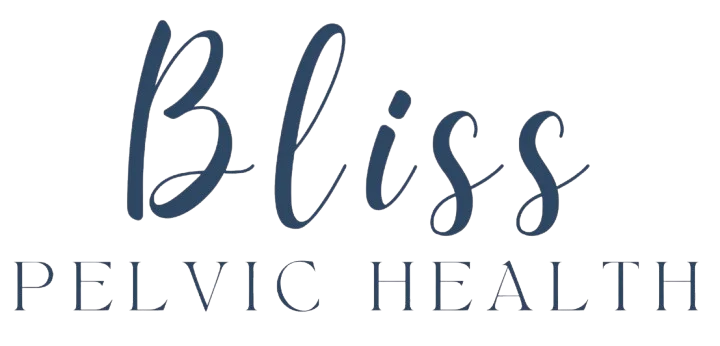Pelvic and abdominal pain In Wesley Chapel, FL

Pelvic and abdominal pain can be a debilitating and frustrating condition for many individuals. It can be caused by a variety of factors, including injury, disease, or dysfunction in the pelvic region. We understand the importance of addressing these challenges with a holistic approach that incorporates both pelvic floor therapy techniques and targeted lifestyle changes.
We offer comprehensive treatment plans for individuals dealing with pain. Our team of experienced physical therapists utilizes evidence-based practices and the latest technology to provide customized care to our patients.
Prevention is key to maintaining a healthy pelvic floor and preventing future episodes of pain. Our physical therapists will provide you with education and tools to help you maintain good pelvic health, including proper posture, breathing techniques, and exercises to strengthen your pelvic floor muscles.
Diagnosing Pelvic and Abdominal Pain
The first step in treating pelvic and abdominal pain is to determine the underlying cause. Our physical therapists will conduct a thorough evaluation to identify any anatomical or functional issues that may be contributing to your pain. This may include an assessment of your pelvic floor muscles, spinal alignment, and joint mobility.
There are several factors that can cause pain, including conditions like endometriosis, interstitial cystitis, irritable bowel syndrome, and pelvic floor dysfunction. Our team of physical therapists is highly knowledgeable about these conditions and uses evidence-based techniques to create customized treatment plans that address your unique symptoms.
Treatment Options
Once we have identified the root cause of your pain, we will create a personalized treatment plan that may include a combination of the following techniques:
- Manual Therapy: Our physical therapists use hands-on techniques to mobilize joints and soft tissues, improve circulation, and reduce pain and inflammation.
- Pelvic Floor Therapy: We specialize in treating dysfunction in the pelvic floor muscles, which can contribute to pelvic and abdominal pain. This may include exercises to strengthen and relax the muscles, as well as biofeedback techniques to improve awareness and control.
- Exercise Therapy: We design exercise programs that are tailored to your specific needs and goals. These may include stretching, strengthening, and postural exercises that can help to alleviate pain and improve mobility.
- Lifestyle Modifications: We offer advice on lifestyle changes that can help to reduce pain and improve overall wellness. This may include dietary changes, stress management techniques, and ergonomic adjustments to your work or home environment.
Our physical therapists prioritize creating a safe and comfortable environment where you can feel comfortable discussing your symptoms and concerns. We listen carefully to our patients and work collaboratively with them to develop treatment plans that are tailored to their unique needs and goals.
Endometriosis
Endometriosis is most commonly characterized by painful periods, intercourse pain, pain with bowel movements, urination pain, infertility and/or diarrhea during periods. Endometriosis refers to a condition where the tissue that lines your uterus (the endometrium) grows outside of your uterus. You may have endometriosis or suspect you might.
Pelvic floor therapy is a great option to manage your symptoms. Your pelvic therapist will help you reduce adhesions, and scar tissue and limit your movement. This can often cause pain with intercourse and the use of a tampon. To help you continue your progress, they will set you up with a stretching or exercise program.
Interstitial Cystitis
Interstitial Cystitis, also known as Painful Bladder Syndrome (PBS), is a chronic inflammatory condition that affects the deep and muscular bladder layers. It can cause bladder frequency, urgency, and/or pain.
Over time, if there is chronic inflammation in the bladder, this can cause damage to the surrounding muscles and fascial tissues. Inflammation in the muscles and fascia can cause symptoms that may seem to originate from the bladder.
Pelvic floor therapy can be used to release constrictions in fascia and activate trigger points in the pelvis, hip, pelvis and pelvic floor muscles. Painful Bladder Syndrome symptoms can be relieved by releasing and rebalancing tissue and muscles.
Pudendal Neuralgia
Like other peripheral nerves, the pudendal is how your brain “connects with” the muscles and tissues in your body. It sends and receives messages from the brain to the body such as movement and sensation. Nerves can become irritated, compressed, or irritated. This “message chain”, which is responsible for sending and receiving messages between the brain and body, can cause problems. You might feel pain, numbness, or tingling. By guiding you in the restoration of the structures that contribute to your pudendal neuralgia, pelvic floor therapy can help.
Vulvodynia
Vulvodynia, which literally means “symptom”, refers to pain (dynia), in the vulvar area (vulvo). It refers to the discomfort and chronic pain experienced in the vulvar area. We are specialized in manual therapy and have extensive training in treating chronic pelvic dysfunction.
Vaginismus
Vaginismus is a psychosexual condition that causes involuntary contraction of the pelvic floor muscles whenever there is an attempt at vaginal insertion. This can make it extremely painful or even impossible for a penis, toy. tampon, speculum, or finger to get inside of the vagina. A common experience is that it feels like you’re hitting a wall when you attempt vaginal insertion.
Vaginismus can be treated by addressing both the emotional and physical drivers. Pelvic floor therapy helps with vaginismus by treating the physical response. If you are suffering with vaginismus, don’t hesitate to reach out and begin your healing journey.
SI Joint Dysfunction
Sacroiliac Joint (SIJ) dysfunction, a lower back/pelvic condition, can be caused by joint stiffness (hypomobility), or slackness (hypermobility), at the sacroiliac bones in the pelvis. This condition can affect men and women of any age, but it is more common in females. Patients suffering from SI joint pain may find pelvic floor therapy at Bliss Pelvic Health beneficial. Your pelvic floor therapist will evaluate your SI joint dysfunction to determine an individualized treatment plan for you.
Low Back Pain
Your pelvis and tailbone are supported by muscles that include your back muscles, stomach muscles and glutes, and a small group of muscles located at the base called your pelvic floor. If you are not getting these checked out you are missing an important piece of the puzzle to your low back pain.
We’ve known for a long time that low back pain and the pelvic floor are closely related. Many of our patients notice sciatica and other low back symptoms but they don’t realize that it could be due to their pelvic floor until they have their initial evaluation. To provide sustained relief from lower back pain, it is important to examine both the pelvic floor as well as the lower back.
Hip Pain
A pelvic floor specialist might be able to help you if you have hip pain as the muscles of your hip are directly connected to your pelvic floor. Your hip muscles, pelvic floor muscles and core muscles must all work together to allow your body to move efficiently. Each muscle group should be strong and flexible. Your body could rely on the other muscles for stability or movement, eventually causing more pain or dysfunction.
To determine if the primary cause of hip pain is in one of these areas, a pelvic physical therapist will perform an internal assessment. An individualized plan can restore mobility, stability, function, and functionality of the pelvic floor and other hip muscles. You can return to the activities that you love by correcting any underlying muscle imbalances.
Tailbone Pain
Tailbone pain, also call Coccydynia, can be treated by our expert pelvic floor therapists. Coccydynia is the pain from the small bone just above your anus at the end of your spine. It can be quite painful! This is a common problem that we treat all the time. Coccydynia can affect women of all ages and we can help them get the correct pelvic floor PT treatment to resolve their pain. Don’t let your tailbone pain get you down. Let’s make you feel better! Schedule your appointment today.
Why Choose Us?
We understand the challenges that come with living with pain. That’s why we are committed to providing compassionate and effective care to all of our patients. Our team of physical therapists has years of experience in treating pelvic and abdominal pain, and we stay up-to-date on the latest research and techniques in our field.
Living with pain can significantly impact your quality of life. It can interfere with daily activities, including work, exercise, and socializing. If left untreated, it can also lead to anxiety, depression, and other mental health concerns. That’s why seeking prompt and effective treatment is essential for improving your overall well-being.
Get the Care You Need
We also prioritize patient education, empowering you with the knowledge and tools you need to manage your pain and prevent future episodes. Our goal is to help you achieve lasting relief from pelvic and abdominal pain so that you can get back to enjoying your life. Contact us today to schedule an evaluation and take the first step towards a pain-free future.


